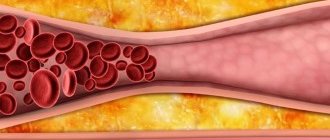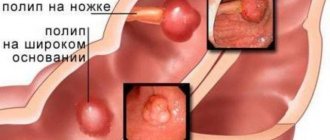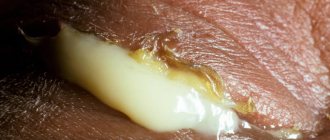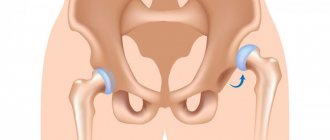World statistics on neoplasms in the intestines are steadily growing, so symptoms of rectal polyps in women and men are quite common in proctological practice. On average, about 20% of adult patients over 50 years of age are diagnosed with polyposis of the rectum and anal canal. According to scientific research, polyps are found in every third patient diagnosed with chronic anal fissure, and in every tenth patient with prolapse of the rectal mucosa. In this case, the symptoms are nonspecific, as they can also be observed in other colonoproctological diseases (hemorrhoids, peptic ulcer, rectal cancer, and so on). Most often, polypoid formations are incidental findings diagnosed during a routine medical examination or during an intestinal examination for another reason.
Classification
Experts classify these tumor-like growths as follows:
- by the nature of growth (malignant, benign);
- according to the characteristics of attachment to the mucosa (pedunculated, flat);
- according to morphological data (hyperplastic formation, adenoma);
- by histology (tubular or tubular, villous).
Since the symptoms of rectal polyps do not bother women or men almost until the stage of degeneration into a malignant tumor, proctologists are most attentive to morphohistological characteristics. Thus, the most dangerous polyps from the point of view of malignancy are:
- adenomatous (single or multiple) - most common, capable of degenerating into a cancerous tumor;
- originating from the glandular epithelium (villous tumor) - the risk of malignancy reaches 90%, treatment is surgical;
- inflammatory (a consequence of ulcerative colitis and related ailments) are also prone to degeneration.
What are anal polyps
Anal polyps are benign formations in the lumen of the anal canal. On the intestinal mucosa, oval or round glandular epithelium grows. The formation may be pedunculated or directly attached to the mucosa. Due to the presence of a leg, the formation can be mobile and fall out of the anus. Sizes can vary from a few millimeters to 4 cm and above. Growing to large sizes leads to intestinal obstruction and serious complications.
Symptoms of polyposis in women and men
The absence of specific symptoms does not mean that it is impossible to suspect the disease at an early stage. Adult patients may experience the following symptoms:
- sensation of a foreign object in the anal canal (prolapse of the rectal mucosa);
- the flow of mucus from the anus, not associated with defecation processes, which is complemented by severe anal itching and burning (villous polyps);
- pain in the lower abdomen;
- stool instability (prolonged constipation, diarrhea due to multiple formations blocking the intestinal lumen);
- blood streaks on the surface of stool, iron deficiency anemia due to constant intestinal bleeding.
Both in men, who, according to statistics, are operated on one and a half times more often, and in women, the symptoms of polyps of the rectum and anal canal are common. In this case, only a doctor can establish an accurate diagnosis.
Methods for diagnosing polyps
According to proctological literature, most of the detected malignant formations in the intestines are the consequences of polyps. Therefore, at the slightest suspicion of an imbalance, you must contact a proctologist who will find out the cause of the ailment. In addition to collecting information about symptoms and family history, the following diagnostic methods are used:
- Physical examination - a visual external examination to assess the shape and gaping of the anus, the condition of the surrounding skin, as well as palpation (digital examination allows you to identify the presence of polyps in the anal canal and exclude other pathologies).
- Instrumental diagnostics - anoscopy and rectoscopy (sigmoidoscopy) give a more detailed picture of the inner surface of the intestine 25 cm from the anus, colonoscopy allows you to examine all parts of the colon and exclude oncological and inflammatory diseases.
How are polyps diagnosed (identified)?
Most often, colon polyps are discovered during this study. Colonoscopy is a diagnostic method in which the doctor examines the entire colon from the inside. A colonoscope is a thin flexible telescope tube. The thickness of a colonoscope is approximately equal to a finger. It enters through the anus and further into all parts of the colon until it reaches the cecum (the junction of the small and large intestines). A colonoscope has fiber optic channels that transmit light to a camera at the end of the machine. This allows the doctor to examine your intestine from the inside.
Sometimes other testing methods are used to diagnose colon polyps, such as barium enema (a special X-ray test with contrast), sigmoidoscopy (similar to colonoscopy, but uses a shorter telescope), and sigmoidoscopy.
When performing sigmoidoscopy, it is possible to examine the lowest section of the colon - the rectum and the beginning of the sigmoid colon, that is, the final 15-20 centimeters of the colon.
During sigmoidoscopy, the lower third of the colon is examined. Both studies are performed on an outpatient basis and do not require lengthy preparation.
In contrast, a colonoscopy allows you to examine the entire colon. To conduct the study, preliminary preparation of the intestine (cleaning the intestine of feces) is required.
Although stool occult blood testing is an important test for diagnosing various colon diseases, a negative result on this test does NOT guarantee the absence of polyps. If at least one polyp is detected, a complete examination of the colon is required, since in 30% of cases polyps are multiple.
As mentioned earlier, the vast majority of polyps do not manifest themselves in any way. Therefore, in a large number of people who have polyps, they will never be diagnosed (not detected). The above diagnostic methods may be prescribed if you have any characteristic symptoms or if there are other reasons. For example, if a stool test for occult blood is positive, a colonoscopy should be ordered to accurately examine the colon.
Rectal polyps - treatment tactics
Treatment of rectal polyps without surgery is impossible. Moreover, it is recommended to be treated in a specialized proctology hospital. The formations are removed either during endoscopic examination or surgically.
- The endoscopic method of removal involves capturing the polyp with a metal loop, which heats up and “cuts off” the stalk. The advantage of the method is that it is bloodless and quick rehabilitation, the disadvantage is that it is applicable only to single formations. A biopsy test is performed first.
- The transanal method of treating rectal polyps consists of pulling the epithelium to the outer edge on an outpatient basis using a speculum, mirrors and special forceps and cutting off the formation, applying sutures. Low-lying polyps can be removed transanally. The disadvantage of the technique is the limited area for manipulation, the risk of wound infection and bleeding.
- Colotomy and resection are radical methods, used in cases of significant damage or when cancer is detected. Under anesthesia, an incision is made in the ileum and polyps are removed, or a total resection of the large intestine is performed.
The endoscope is equipped with a video camera and manipulators, making it possible to remove a rectal polyp directly during the procedure. The remote formation is then sent for laboratory research.
Colonoscopy with removal of polyps (endoscopic polypectomy) is possible:
- free of charge within the framework of compulsory health insurance, that is, under the compulsory medical insurance policy, if there is a referral from a medical institution or a territorial health authority;
- free of charge as part of high-tech medical care, if a previously performed biopsy confirms the malignant degeneration of the polyp;
- on a contractual basis at the request of the patient.
Diagnostic colonoscopy, as well as removal of polyps during colonoscopy, can be performed with intravenous sedation (pain relief).
Is there an alternative therapy?
Often, patients end up on the operating table after long-term use of “true” folk recipes for the treatment of tumors in the intestines without surgery, as well as self-prescribed medications. All this greatly worsens the patient’s condition, forces the disease to progress, and uncontrolled medications and dietary supplements can significantly increase the risk of developing a malignant process. Cancer affects both gender groups at equal rates, and the mortality rate increases every year.
Rehabilitation period after surgery
Drug treatment of rectal and anal polyps is only an addition to the general scheme. Until the wound is completely healed, the anorectal area is sanitized every day using anti-inflammatory and wound-healing ointment-based drugs. In the long term, for 5 years after surgery, a person requires regular monitoring and an annual colonoscopy, since polypous nodes tend to form again.
- Gardner's syndrome;
- familial adenomatous polyposis;
- serrated polyposis syndrome;
- diffuse polyposis.
Prognosis and prevention
The development of rectal polyposis can be predicted conditionally, taking into account the nature of the formations, for example:
- anal canal adenoma - re-growth of polyps is possible;
- cloacogenic formations - high risk of cloacogenic cancer;
- hyperplastic - the pedunculated structure makes it possible to identify the disease at an early stage due to a clearer clinical picture (external manifestations);
- fibrous - the prognosis is favorable.
Preventive measures do not have a specific color. Proctologist specialists can only offer a general list of recommendations to reduce the risk of morbidity: a healthy balanced diet, an active lifestyle, a minimum of thermal procedures and excessive stress associated with frequent movement of heavy objects.
Causes of polyps and papillomas of the anus
The anus is an area in which the growth of tumors is quite often observed. Polyps may form inside the rectum. Condylomas (a type of papillomas that resemble cauliflower in appearance) may appear in the perianal area (around the anus). In some cases, condylomas can also occur inside the anal canal.
Sometimes you may not even suspect the existence of such formations in yourself. A common situation is when their presence is established during an examination (or during an endoscopic examination) when treating for other diseases.
Polyp
- This is the growth of the mucous membrane in the form of a mushroom body. With its thin stalk, the polyp maintains contact with the wall of the rectum, and the body itself hangs freely inside the canal.
Papillomas (genital warts)
are caused by the human papillomavirus (HPV). HPV is a widespread disease; according to various sources, from 70 to 90% of people carry this infection. However, in most cases, the virus “sleeps” and becomes active when immunity decreases. This is when active growth of papillomas occurs.
In the perianal area, HPV manifests itself in the form of genital warts, which usually also affect the human genitals. Often condylomas become injured and bleed. The virus can be transmitted through blood from damaged condylomas.
Treatment of intestinal polyps in Rostov-on-Don
Proctologists warn: absolutely any polypoid formation in the rectum, anal lumen, or large intestine can be fraught with cancer. If you have several risk factors, you are concerned about any strange manifestations in the anorectal area, you suspect you have symptoms of a rectal polyp, you are a woman or a man over 50 years old, then you simply need the attention of a proctologist. We invite you to diagnostics at a private clinic in Rostov-on-Don, where you will be examined by a proctologist surgeon with more than 16 years of experience, Arkady Ambartsumovich Tolokhyan. The doctor will identify intestinal polyposis (if the disease occurs), conduct research for the presence of other pathologies, and prescribe competent, adequate treatment with the least amount of trauma to the body.
Symptoms of the disease
Discomfort in the anus may be a sign of polyps.
Polyposis of the sigmoid colon in the initial stages is asymptomatic. The patient can learn about the presence of pathology during a routine examination of other organs.
Multiple growths can cause some discomfort, but the first specific symptoms occur when the tumor reaches a size of more than 3 cm. Symptoms of sigmoid colon polyposis:
- pain, attacks of itching when trying to sit down or change body position;
- blood in stool after bowel movement. Some types of polyps can cause heavy bleeding;
- presence of mucus in feces;
- attacks of diarrhea alternate with delayed bowel movements. There may be a false urge to defecate;
- various signs of dyspepsia - nausea, vomiting, increased gas formation;
- large polyps may fall out of the anus;
- in severe cases - obstruction, fever, general weakness.









